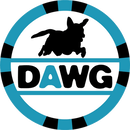What you need to know
Where, when and how we reward our dogs shapes how they learn new behaviours. Watch this video from Susan Garrett: Dog Training Reinforcement Process: How, When and Where Are You Rewarding Your Dog? (youtube.com)
Interspecies communication
Marker Word
Your dog needs to understand when it has done something correctly. This could be “yes”, “good”, or similar – the shorter/quicker to say the better.
Release Cue
Your dog needs to understand that it can move from a position and find value/interact with something. This could be “break”, “go”,
“release” – try to avoid using words you use a lot during the day as this cue is not agility specific. It is different from your marker word.
For example, you ask your dog to sit, you can say “good” and your dog knows they’ve done the right thing. Your dog should stay sitting until you give your release cue.
Your dog needs to understand when it has done something correctly. This could be “yes”, “good”, or similar – the shorter/quicker to say the better.
Release Cue
Your dog needs to understand that it can move from a position and find value/interact with something. This could be “break”, “go”,
“release” – try to avoid using words you use a lot during the day as this cue is not agility specific. It is different from your marker word.
For example, you ask your dog to sit, you can say “good” and your dog knows they’ve done the right thing. Your dog should stay sitting until you give your release cue.
What your dog needs to know
Basic Position Cues
Your dog needs to sit and down on verbal cue, this is saying your sit or down cue once without repetition or you needing to stand over your dog/use significant body motion to get the behaviour.
It’s easy to sit and down in your lounge without distractions. Make sure you practice this in lots of places with lots of distractions.
Recall From Sit or Down
This is an essential behaviour. You need your dog to hold position while you move off and only come when called. Practice this behaviour everywhere. Especially keep practicing once you start teaching agility. This behaviour needs to have as much value for your dog as any piece of agility equipment!
Recalls also make a great part of your warm up routine
Hand Target/Touches
Teaching your dog how to tap their nose against your hand opens a lot of possibilities especially when paired with release cues, e.g. teaching stands, rear foot targets, cone wraps. Agility for most handlers is about your dog reading your body’s positioning, so teaching your dog to target a part of your body gets them ready for this!
3 Easy Tricks Every Dog Should Know #68 (Susan Garrett on youtube.com)
Your dog needs to sit and down on verbal cue, this is saying your sit or down cue once without repetition or you needing to stand over your dog/use significant body motion to get the behaviour.
It’s easy to sit and down in your lounge without distractions. Make sure you practice this in lots of places with lots of distractions.
Recall From Sit or Down
This is an essential behaviour. You need your dog to hold position while you move off and only come when called. Practice this behaviour everywhere. Especially keep practicing once you start teaching agility. This behaviour needs to have as much value for your dog as any piece of agility equipment!
Recalls also make a great part of your warm up routine
Hand Target/Touches
Teaching your dog how to tap their nose against your hand opens a lot of possibilities especially when paired with release cues, e.g. teaching stands, rear foot targets, cone wraps. Agility for most handlers is about your dog reading your body’s positioning, so teaching your dog to target a part of your body gets them ready for this!
3 Easy Tricks Every Dog Should Know #68 (Susan Garrett on youtube.com)
Working Close to Other Dogs
Your dog needs to be able to work when other dogs and handlers (of all shapes and sizes) are close. Your dog cannot display significant and continued aggression towards other dogs. First lesson nerves are ok but if it is sustained, we will point you in the direction of a private instructor and people who can help with aggression.
